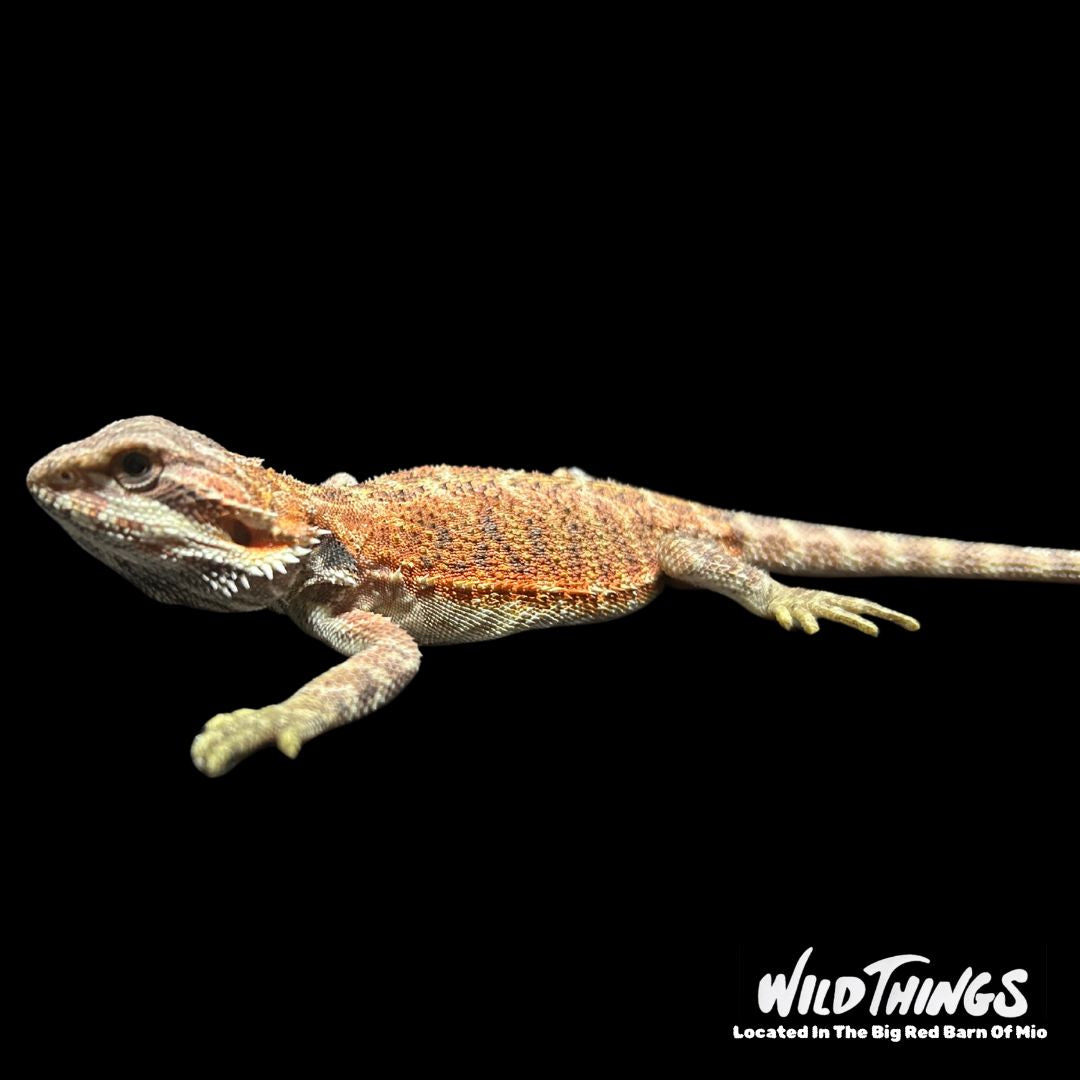AuSable River Outdoors
Golden Bearded Dragon
Golden Bearded Dragon
Couldn't load pickup availability
Species: Golden Bearded Dragon
Scientific Name: Pogona Vitticeps
Origin: Australia
Lifespan: 8-10 Years
Size: Up to 24 inches long, with half of this length being their tail
Enclosure Type: Ideally, you will want to start with an enclosure large enough for an adult, but if money is tight, it is okay to start with a smaller enclosure with a baby bearded dragon. Just keep in mind that you will need to purchase a larger enclosure as it matures
Enclosure Size: At least 125-gallons. This aquarium measures 72 inches long, 18 inches wide, and 16 inches tall. This will give an adult bearded dragon plenty of space.
Substrate: One of the most popular substrates used for bearded dragons is calcium-based sands and playground sand. Reptile Cage Carpet is a plastic carpet specifically designed for use in reptile terrariums. It resembles the green or brown indoor/outdoor carpet used to resemble grass. Newspaper is another viable option for substrate. Newspaper is often readily available in the home and makes for a simple solution. Just place three or four layers of newspaper, covering the entire floor area.
Décor: Hiding areas, climbing branches, basking rocks, moss, and plants
Water: A shallow dish of fresh water should always be available in their enclosure. The size should be appropriate to prevent drowning, especially for juvenile dragons. Regularly misting your bearded dragon, especially during shedding, can encourage them to drink. They often lick water droplets from their skin and surroundings. Bathing not only aids in shedding and hygiene but also provides an opportunity for hydration. Many beardies will drink during their bath. Offering hydrating foods like leafy greens (in moderation), squash, and occasional fruits contributes to their overall water intake.
Temperature: Adult bearded dragons (over 18 months old) can have slightly cooler basking areas with temperatures ranging between 90°F (32°C) to 93°F (33°C). The cooler region of the enclosure can still be kept at 80°F (26°C) to 90°F (32°C), just as with babies and juveniles. The nighttime temperatures should drop to 72°F (32°C) to 80°F (26°C) within the enclosure. If the temperatures drop below this after turning the heat and light sources off at night, you may need to use a heating device that does not emit light to supplement heat. The bright light from a daytime bulb will disturb the bearded dragon's sleeping patterns.
Humidity: The ideal humidity range for a bearded dragon’s habitat is 30% to 50%. A bearded dragon will have difficulty shedding its skin if their environment’s humidity falls below this ideal range. You can increase a bearded dragon’s humidity within their environment by misting the lizard and its habitat decor regularly or by adding non-toxic live plants to the enclosure. If you need to reduce the habitat’s humidity, ensure that the tank is well-ventilated so that humid air can escape. Use a hygrometer to measure the enclosure’s humidity every day.
Lighting: It is important that your pet receives at least 10 to 12 hours of exposure to the lighting each day. Failure to provide UVA and UVB rays can lead to many health issues including mental problems, loss of appetite and metabolic bone disease
Type Of Diet: Omnivorous
Types Of Food: Crickets, Mealworms, Hornworms, Waxworms, Calciworms, Roaches, Superworms, Kiwis, mangoes, bananas, papayas, cantaloupes, watermelons, and apples are all beardie-safe fruits. Deep leafy greens, parsley, cabbage, peppers, broccoli, squash, carrots, green beans, bok choy, escarole, cilantro, endive, and prickly pear make nutritious vegetable staples in a bearded dragon’s diet.
Feeding Schedule: For babies under 3 months, aim to feed them 5 times a day. Babies 3-6 months should be fed 3-4 times a day, while those six months old should be fed 3 times a day, working their way down to 2 times a day as they approach a year of age.
Supplements: Bearded dragons need three vitamin supplements in their diet: a calcium supplement with vitamin D, a calcium supplement without vitamin D, and a multivitamin powder designed for reptiles. Calcium supplements should be alternated daily. Pet parents should use a powdered calcium supplement with vitamin D on one day and then use a calcium supplement without vitamin D the next. A multivitamin powder should be used once a week. Before feeding, dust your bearded dragon’s insects with a powdered supplement. To dust insects quickly and efficiently, place insects in a bag or disposable plastic container along with a powdered supplement. Then, shake the bag lightly until the insects are coated evenly in powder.
Share

